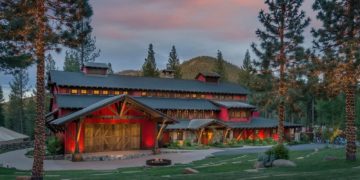Nonrecourse carveout guaranties are part of the landscape for commercial real estate loans, much as landmines are part of the landscape for recent war zones.
These nonrecourse carveout landmines have often exploded dramatically in the faces of carveout guarantors. Guaranties triggered full recourse for the loan if the borrower violated one of several dozen single purpose entity covenants, ranging from the trivial to the fundamentally misguided.
In the latter category, some SPE covenants required the borrower to remain solvent or limit its ordinary indebtedness to certain capped amounts—covenants the borrower would inevitably violate if it got into financial trouble. The guarantor could face personal liability for the entire loan if the property couldn’t cover its expenses. Such exposure is fundamentally inconsistent with the logic of nonrecourse financing.
Many lenders have corrected their documents to prevent such anomalies. Today’s updated SPE covenants often don’t support claims for liability of the type suggested in the previous paragraph. Instead, liability depends on whether the borrower, controlled by the guarantor, actually did bad things that hurt the lender.
That doesn’t mean all of the landmines have been cleared. At least two significant landmines remain. More will surely become apparent in the litigation that today’s commercial real estate downturn will trigger.
As one significant remaining landmine, many nonrecourse carveout guaranties make the guarantor personally liable for the entire loan if any voluntary lien is recorded in violation of the loan documents. Lenders have been known to claim that mechanics’ liens are voluntary on the basis that the borrower chose to order construction work and then chose not to pay for it. If a mechanic’s lien gets filed, the lender can then try to assert that the guarantor becomes personally liable for the entire loan.
That picture has two things wrong with it. First, the lender’s interpretation of “voluntary” seems unreasonable. Worse, if the lender is right, the mere filing of a mechanic’s lien triggers full personal liability for the loan, even if the borrower quickly removes the lien. In contrast, the loan documents themselves typically give the borrower reasonable time to cure a problem before the lender can take action. That different treatment means the mere filing of a mechanic’s lien could make the guarantor immediately liable for the full loan even though the borrower itself still had time to fix the problem. The same is true if the borrower does somehow carelessly file a lien that is truly “voluntary.”
Borrowers and guarantors can and should solve those problems. First, they should insist on defining “voluntary” lien narrowly, to capture only cases where, for example, the borrower intentionally creates a junior lien, such as a second mortgage. Whether or not that position prevails, the guarantor should insist on having notice and opportunity to cure before any voluntary lien, however defined, triggers full personal liability for the entire loan. Guarantors should have at least the same protections as the borrower. Practically no nonrecourse carveout guaranty extends that sort of courtesy to any guarantor if any lien arises.
Similar anomalies arise if the borrower incurs prohibited indebtedness. The loan documents give the borrower some time to correct (repay) that indebtedness. The guarantor should demand similar protection. If the prohibited indebtedness arises because the property is sucking wind, that shouldn’t trigger any guarantor liability at all.
Another landmine: if a troubled borrower admits in writing that it can’t pay its debts, most loan documents make that a default. It also usually makes the guarantor personally liable for the whole loan. That’s partly because such an admission can help the borrower’s creditors start an involuntary bankruptcy or similar proceedings under state law. The lender doesn’t want that to happen. That all sounds reasonable.
It may, however, mean that ordinary, innocent communications with creditors, or even the lender, about the borrower’s financial problems can conceivably create exposure for both the borrower and the guarantor. If the borrower admits in those conversations that it can’t pay its debts, the guarantor might face personal liability for the entire loan. If the admissions are accurate, however, and the borrower in fact can’t pay its debts, does it really even do much incremental damage if the borrower admits a fact that is staring everyone in the face?
A careful guarantor will want to limit the “admission of inability to pay debts” trigger for liability as much as possible, or even eliminate it. If written broadly, as it usually is, it creates a tripwire and could give the lender all kinds of opportunities to try to make the guarantor personally liable for the whole loan.
Read the full article here








